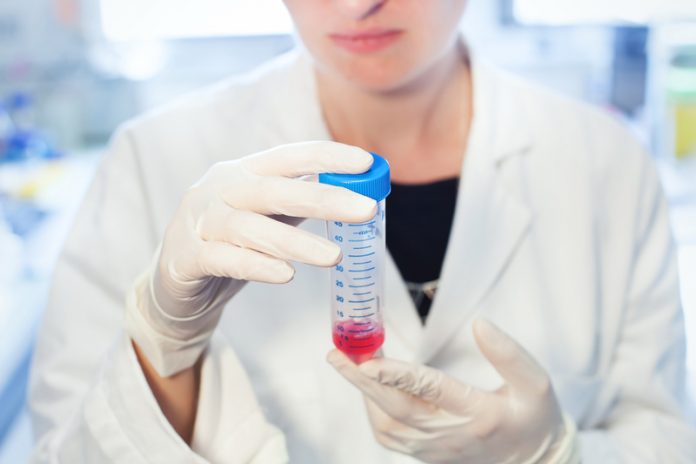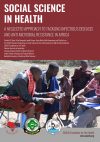Kit C.B. Roes from the University Medical Centre, Utrecht outlines why clinical research in rare diseases requires swift implementation of new methodology
Efficient clinical research in rare diseases is crucial for new (drug) treatments to reach patients for whom there is often no treatment available. Design and conduct of clinical trials in these diseases are challenging, due to the smaller number of patients available to participate. The European Union has made a substantial investment into research for new methodologies for clinical research in small populations, with three funded projects completing in 2017. Results were obtained, a network was built, and there is strong support both from patient organisations and regulatory authorities to implement innovative methods across industry and academic clinical research. A call for concerted action to all of us to make this happen.
Clinical trials as cornerstone for development of new treatments
The combined clinical and socioeconomic impact of rare diseases is huge. An estimated 30 million European patients suffering from a rare disease. Of the more than 6000 rare diseases known, many are chronic, potentially very disabling and typically affect children. The unmet need for patients suffering from a rare disease is well recognised. Over the past decades, the European Union – as well as other jurisdictions such as the United States and Japan – have taken on numerous initiatives to stimulate the development of new therapies to treat rare diseases. These initiatives range from regulatory legislation to stimulate research by pharmaceutical companies and accelerated regulatory pathways, to funding research and building strong research networks across Europe for rare diseases. The incentives towards industry appear to be successful, with many more drugs being granted orphan designation.
A cornerstone to bringing new drug treatments to patients are clinical trials to assess efficacy and safety, and ultimately, the benefit-risk balance. These trials still face substantial challenges. The first obvious challenge is the inherently small number of patients that can be recruited into clinical trials. Secondly, there is often a substantial heterogeneity in disease course between patients suffering from the same rare diseases. Thirdly, exploration of these challenges in clinical research for rare diseases has triggered a re-think in terms of whether the usual standards of evidence (number of trials, control of false positives (type 1 error rates), and the role of meta-analysis) are adequate.
This calls for innovative approaches, including new concepts for clinical endpoints, more advanced data analysis, (pharmaco-metric) modelling, trial designs with multiple treatments and approaches to leverage the data from registries and routinely collected clinical data. And – specifically for very rare diseases – a fundamental rethink how much evidence is actually needed to make new treatments available to patients.
A joint meeting with regulatory authorities, patient representatives, academia and industry towards implementation
Three major EU funded projects in this area, Asterix, IDeAl and InSPiRe, have made major progress in these areas over the past 4 years. The progress was presented at the ‘Seventh Framework Programme (FP7) small-population research methods projects and regulatory application workshop’, March 29th & 30th 2017, which was jointly organised by the European Medicines Agency (EMA) and the 3 EU projects. At this meeting, it was clear that:
The progress across the 3 projects is impressive, and the joint challenge for patients stimulated collaboration across the 3 projects to a level that is unique to such programs.
The EMA is strongly supportive of innovative methods in this field. Part of the results is ready for broad(er) implementation, which can be stimulated by regulatory instruments such as the EMA Guidance on Small Populations, and the EMA Qualification Procedure.
Innovative methods that may have even stronger breakthrough impact need further investigation, including real life application on a smaller scale.
Patient representatives appreciated the opportunity to truly engage actively in advancing research methodology for clinical trials.
There is a strong call from the patient perspective to move to implementation to accelerate the availability of new but proven, therapies for patients suffering from a rare disease.
Highlights and the action already envisioned
The full workshop is available online and the results of the project are presented with a discussion. A few highlights are the following;
In view of the limited number of rare disease patients available for clinical trials, it is crucial that information on new treatments from other sources (animal experiments, earlier healthy volunteer trials, trials in different populations) can be used to infer efficacy and safety. Developments such as the ‘scepticism’ factor for extrapolation from one population to another and pharmacometric modelling now allow a more quantitatively justified approach to do so. This will strongly aid in researching new treatments within the constraints of small samples.
A second development that sparked discussion and enthusiasm, concerned a new approach to clinical endpoints. To accommodate the potential large heterogeneity between patients, Goal Attainment Scaling allows the patient to have individualised outcomes that nevertheless can be summarised across comparative groups of patients to assess the treatment effect. This may resolve the problem of choosing appropriate endpoints for diseases such as Duchene’s Muscular Dystrophy. Currently, the so-called 6-minute walking test is used as default endpoint. But boys suffering from Duchene’s become wheelchair bound at the age of about 8-10, hence with such endpoints many patients are excluded from trials – although they might very benefit from treatment.
A look into the future
The network of experts across the 3 projects covers large parts of the EU, and many researchers are engaged in clinical research for rare diseases. Hence, new methods gradually find their way to practice. This is, however, not enough and not quick enough from the patient perspective. The three project leads, Prof. Dr. R-D Hilgers, Prof. N. Stallard and Prof. K. Roes assessed that 2 crucial objectives can be pursued simultaneously. The first and foremost objective is to ensure broad implementation of the new findings in clinical research for rare diseases, across academia and company research and across all relevant types of interventions. This directly contributes to the IRDiRC objective of regulatory approval of 150 new drug therapies in the period 2017-2027. Secondly, aiming for truly breakthrough improvements requires continuation of the research network to expand on the most innovative methods, as well as tailor these to the specific nature of the vastly diverse rare conditions.
The first objective is already on its way. In addition to engaging in clinical research projects across the EU, it is anticipated that the project leads will submit a selection of methods – such as Goal Attainment Scaling – for EMA scientific advice, e.g. for qualification of methods. This will stimulate pharmaceutical companies to use the methodology. In addition, general guidance for trials in small populations will likely be revised to include the most recent findings.
Furthermore, we foresee that a target education program can be developed. The core principle is to link education directly with implementation: training is to be aimed at clinical research teams in the process of designing a clinical trials for a rare condition. Their protocol under development can then be actively used in the educational program to implement the learnings. Hence, clinical research protocols are optimised for real, important clinical trials. It can be highly beneficial if these efforts are connected to the recently established European Reference Networks for rare diseases.
Finally, the direction, content and urgency of the research have truly benefitted from patient representative involvement. Although we may not have found the optimal language and process yet, it is clear to all involved that we need to step-up our effort to include patients across all our clinical research phases, including the methodology underlying the design and ultimately the assessment of evidence from clinical trials.
Kit C.B. Roes
Professor of Clinical Trial Methodology
University Medical Center, Utrecht
Tel: +31 88 7568295
k.c.b.roes@umcutrecht.nl
Please note: this is a commercial profile

























